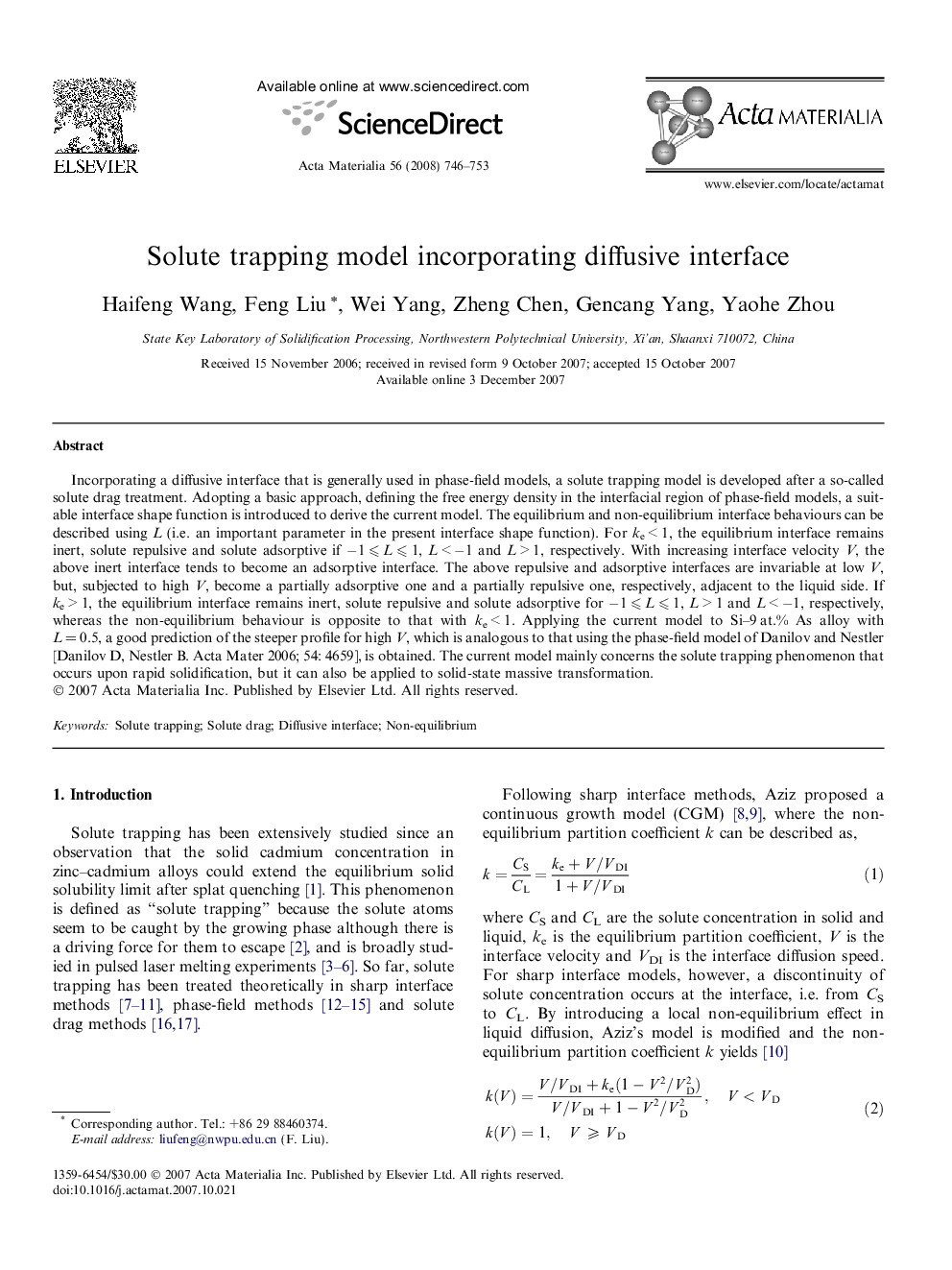| کد مقاله | کد نشریه | سال انتشار | مقاله انگلیسی | نسخه تمام متن |
|---|---|---|---|---|
| 1449314 | 988699 | 2008 | 8 صفحه PDF | دانلود رایگان |

Incorporating a diffusive interface that is generally used in phase-field models, a solute trapping model is developed after a so-called solute drag treatment. Adopting a basic approach, defining the free energy density in the interfacial region of phase-field models, a suitable interface shape function is introduced to derive the current model. The equilibrium and non-equilibrium interface behaviours can be described using L (i.e. an important parameter in the present interface shape function). For ke < 1, the equilibrium interface remains inert, solute repulsive and solute adsorptive if −1 ⩽ L ⩽ 1, L < −1 and L > 1, respectively. With increasing interface velocity V, the above inert interface tends to become an adsorptive interface. The above repulsive and adsorptive interfaces are invariable at low V, but, subjected to high V, become a partially adsorptive one and a partially repulsive one, respectively, adjacent to the liquid side. If ke > 1, the equilibrium interface remains inert, solute repulsive and solute adsorptive for −1 ⩽ L ⩽ 1, L > 1 and L < −1, respectively, whereas the non-equilibrium behaviour is opposite to that with ke < 1. Applying the current model to Si–9 at.% As alloy with L = 0.5, a good prediction of the steeper profile for high V, which is analogous to that using the phase-field model of Danilov and Nestler [Danilov D, Nestler B. Acta Mater 2006; 54: 4659], is obtained. The current model mainly concerns the solute trapping phenomenon that occurs upon rapid solidification, but it can also be applied to solid-state massive transformation.
Journal: Acta Materialia - Volume 56, Issue 4, February 2008, Pages 746–753